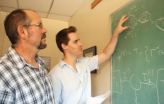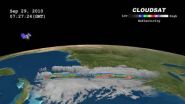(Press-News.org) MAYWOOD, Il. -- The latest advances in treating neurologic disorders such as stroke, headache, Parkinson's disease, epilepsy and sleep disorders are detailed in a special issue of the journal Neurologic Clinics.
Guest editor is Dr. Jose Biller, chairman of the Department of Neurology at Loyola University Chicago Stritch School of Medicine.
"Great therapeutic strides in the clinical neurosciences have been made in the past decades," Biller wrote in the preface to the November 2010 issue, now available online. "It is likely that subsequent decades will bring even greater advances in neurologically oriented therapies."
Fifteen articles detail the latest advances in the treatment and management of neurological disorders, including neurostimulation for headaches, 12 new antiepileptic drugs for epilepsy patients, controlling arterial blood pressure in stroke patients, current and emerging therapies for motor complications of Parkinson's disease, therapeutic challenges in dystonia, treatment of low-grade cerebral gliomas (brain tumors), management of acute, recurrent and chronic meningitis in adults and treatment options for parasomnias (sleep walking, night terrors and other sleep disorders).
The multidisciplinary list of authors includes specialists in neurology, neurosurgery, medical oncology, radiation oncology, psychiatry and neuropathology. Authors are affiliated with multiple institutions, including Loyola, Mayo Clinic, Harvard University, Baylor College of Medicine, Hines VA Hospital, University of Cincinnati, University of Houston and University of Utah.
"I hope that clinicians find this volume useful in the management of their patients," Biller wrote.
### END
'Great strides' in treatment of stroke, headache, epilepsy
2010-10-01
ELSE PRESS RELEASES FROM THIS DATE:
OHSU Toxicology Research Center issues public alert on popular hair salon treatment
2010-10-01
PORTLAND, Ore. — Oregon Health & Science University's Center for Research on Occupational and Environmental Toxicology (CROET) is responding to concerns raised by Portland-area hair salons about a product used for hair straightening. CROET has issued two public alerts describing its findings on the possible negative health impacts of this product.
The product being tested is called Brazilian Blowout. After receiving two samples from Portland-area salons, CROET asked the Department of Consumer and Business Services' Oregon Occupational Safety & Health Division to chemically ...
October 2010 Geology and GSA Today highlights
2010-10-01
Boulder, CO, USA – The October Geology includes a study using fish teeth to understand ocean circulation; discussion of the "Dead Clade Walking" taxa; description of the first reported example of igneous aragonite; discovery of a Paleogene California River, flowing in similar location but opposite direction to the Colorado River; a report of the earliest definite record of predation on pelagic sea lilies; and discovery of the only known active drumlin field in the world. GSA Today examines calderas.
Relationship between mass extinction and iridium across the Cretaceous-Paleogene ...
Turning waste heat into power
2010-10-01
What do a car engine, a power plant, a factory and a solar panel have in common? They all generate heat – a lot of which is wasted.
University of Arizona physicists have discovered a new way of harvesting waste heat and turning it into electrical power.
Using a theoretical model of a so-called molecular thermoelectric device, the technology holds great promise for making cars, power plants, factories and solar panels more efficient, to name a few possible applications. In addition, more efficient thermoelectric materials would make ozone-depleting chlorofluorocarbons, ...
New report on street lighting technologies available from NLPIP at Rensselaer Polytechnic Institute
2010-10-01
Troy, N.Y. – The National Lighting Product Information Program (NLPIP) released its latest Specifier Report, designed to provide objective performance information on existing street lighting technologies -- including light-emitting diode (LED), induction, and high pressure sodium (HPS) streetlights. This report comes at a critical time when many municipalities, some with funding from the American Recovery and Reinvestment Act of 2009, are in the process of replacing HPS streetlights with LED and induction models.
NLPIP, established by Rensselaer Polytechnic Institute's ...
Newly discovered planet may have water on its surface
2010-10-01
A team of astronomers that includes the University of Hawaiʻi' at Manoa's Nader Haghighipour has announced the discovery of a planet that could have liquid water on its surface.
The planet, which is probably 30 percent larger than Earth, was discovered using one of the telescopes of the W. M. Keck Observatory on Mauna Kea. It orbits a relatively small star, Gliese 581, that is 20 light-years from Earth in the constellation Libra.
"By determining the orbit of this planet, we can deduce that its surface temperature is similar to that of Earth," said Haghighipour. ...
NOAA-sponsored scientists first to map offshore San Andreas Fault and associated ecosystems
2010-10-01
For the first time, scientists are using advanced technology and an innovative vessel to study, image, and map the unexplored offshore Northern San Andreas Fault from north of San Francisco to its termination at the junction of three tectonic plates off Mendocino, Calif.
The team includes scientists from NOAA's National Marine Fisheries Service, Oregon State University, the California Seafloor Mapping Program, the U.S. Geological Survey and Woods Hole Oceanographic Institution. The expedition which concludes Sunday is sponsored by NOAA's Office of Ocean Exploration and ...
Underwater robot swims free thanks to York U-designed wireless controller
2010-10-01
TORONTO, Sept. 30, 2010 – A waterproof controller designed and built by York University researchers is allowing an underwater robot to go "wireless" in a unique way.
AQUA, an amphibious, otter-like robot, is small and nimble, with flippers rather than propellers, designed for intricate data collection from shipwrecks and reefs.
The robot, a joint project of York, McGill and Dalhousie universities, can now be controlled wirelessly using a waterproof tablet built at York. While underwater, divers can program the tablet to display tags onscreen, similar to barcodes read ...
Story tips from the US Department of Energy's Oak Ridge National Laboratory October 2010
2010-10-01
NANO -- World's smallest antenna . . .
Instead of the conventional long piece of metal or dipole antenna, electronic devices of tomorrow could incorporate an antenna no bigger than a gnat. This is made possible by a design that allows an electrically charged nano-mechanical oscillator to be tuned to specific electromagnetic waves. "Gone will be the days when we need to match the antenna length to the wavelength," said Panos Datskos, a co-developer of this proprietary technology. The potentially revolutionary system detects very small electric fields over large frequency ...
Plants that move: How a New Zealand species disperses seeds in a high alpine, wet environment
2010-10-01
High in an alpine meadow, Gesine Pufal, from the University of Wellington, New Zealand, crouched low to the ground and splashed some water from her water bottle on a low green plant cushion, then sat back waiting to see if something would move. Sound crazy? Many hikers passing by her may have thought so, but Pufal was trying to find potential plant species that possess a type of plant movement called hygrochasy.
Although the ability to move is typically thought to be a characteristic unique to the animal kingdom, plants are also capable of movement, from the sudden ...
NASA satellites see Nicole become a remnant, another low soaking US East Coast
2010-10-01
Tropical Storm Nicole was a tropical storm for around 6 hours before it weakened into a remnant low pressure area and is now off the Florida coast. NASA Satellite imagery captured different views of Nicole's clouds as the system weakened back into a low pressure area.
While Nicole weakened, a huge trough of low pressure over the U.S. eastern seaboard from Florida to Maine has become the key weathermaker there. The trough, an elongated area of low pressure, is streaming tropical moisture from Nicole's remnants and the Gulf of Mexico, bringing high rainfall totals and severe ...

